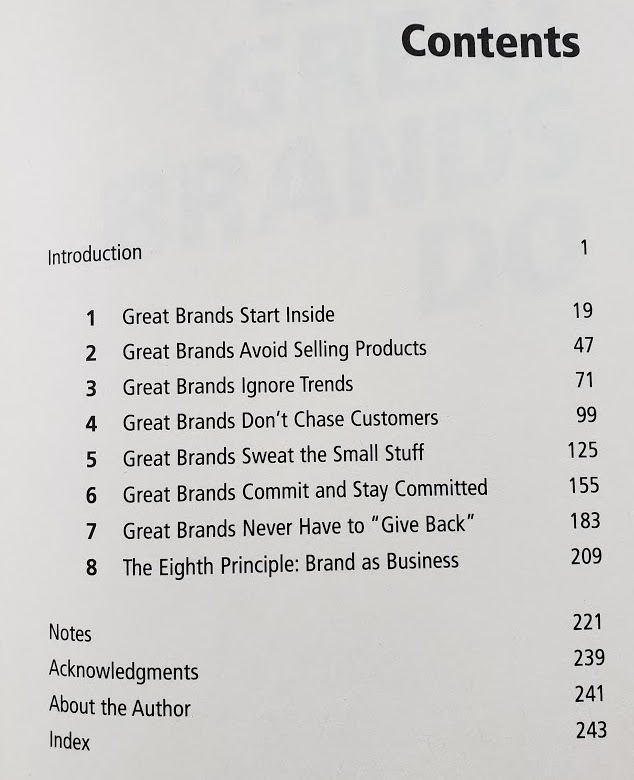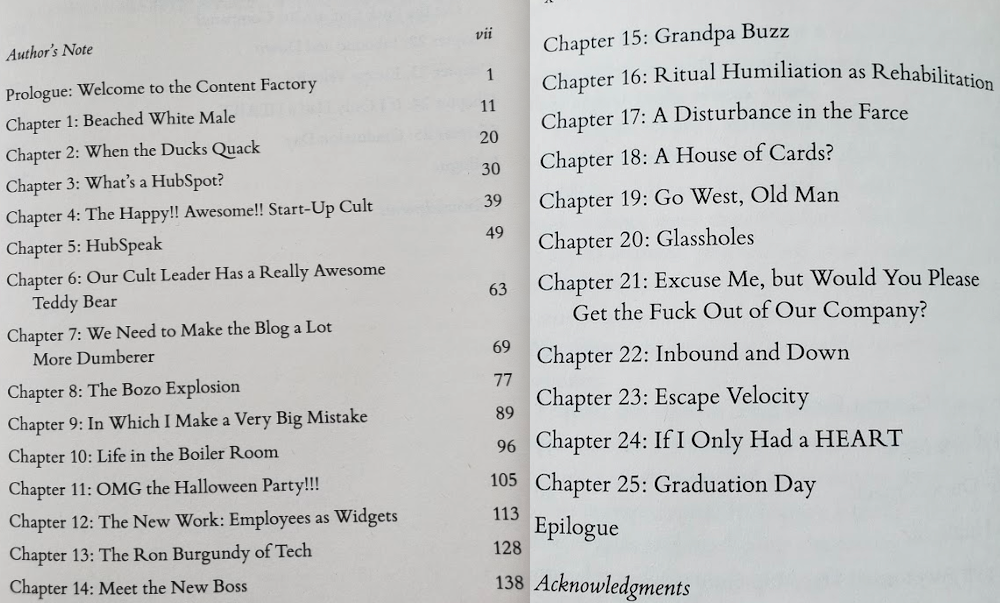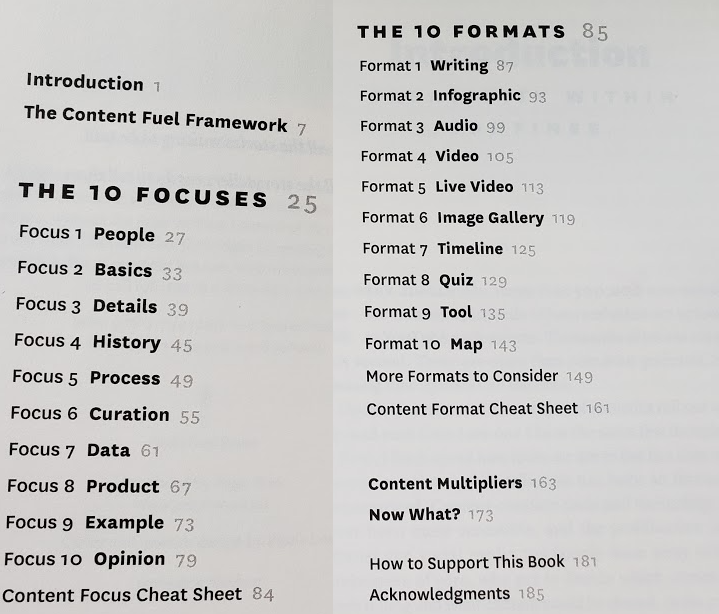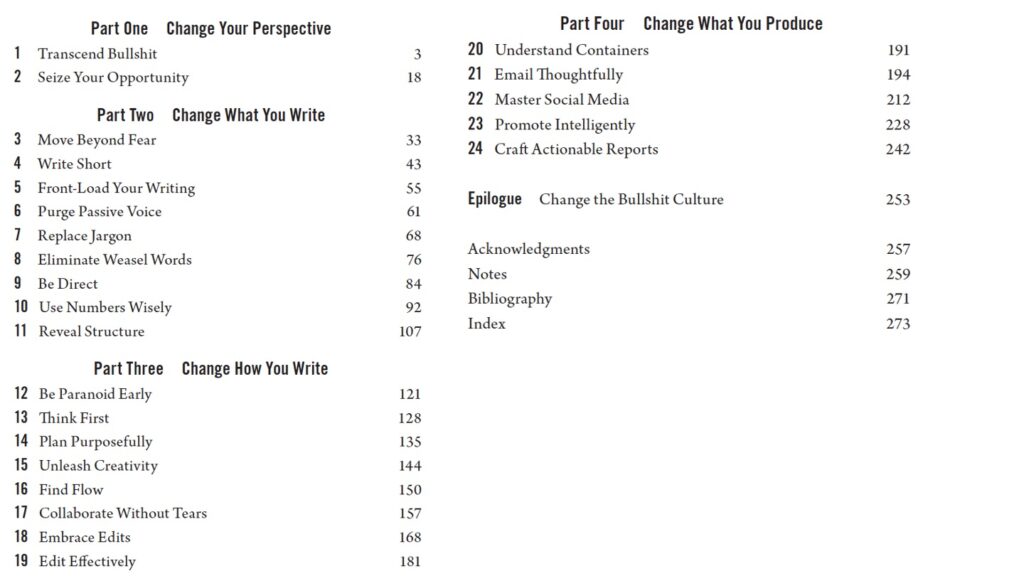How to seduce readers with a sexy table of contents
I bet you never thought of a table of contents as sexy. But it is, or at least it ought to be.
A table of contents is an invitation to go further, to create a new relationship. If that’s what you want, then being sexy is a good strategy.
A potential book buyer peruses the table of contents to see what they’ll be getting. They might review it on your book’s website, on its Amazon page, or in a physical copy in a store.
The words or phrases in the table of contents and the way they are organized should entice and intrigue.
That table of contents should say “Hey, friend. There’s great stuff in here. You want to read it, I know you do. And look at how nicely it’s put together. You want to look at these chapters, I know you do. These chapters — they’re real, and they’re spectacular.”
But how do you do that?
The first step is to organize your actual content so that it lays things out in a rational way. The best way to do that is to spend a chapter or two introducing the big concept and then explore all the dimensions. If you’ve got more than eight chapters, you may also want to organize the book into parts — rationally grouped sets of chapters.
The titles of those parts and chapters make up the table of contents. So how do you make those titles sexy?
Qualities of a sexy table of contents
Here are the qualities of the chapter titles in a sexy table of contents.
- Taken together, they tell a story.
- Each one promises something intriguing.
- They connect to each other.
- They are parallel — they are all in a similar format.
A table of contents need not have all of these qualities, but the more it has, the sexier it will appear.
Let’s take a look at some examples.
Even if you have only a few chapters, the chapter titles can make a point. Here is the table of contents for What Great Brands Do: The Seven Brand-Building Principles that Separate the Best from the Rest by Denise Lee Yohn.

The whole point of Yohn’s book is the seven principles. She hammers that home in the table of contents, with seven chapters whose titles are the principles themselves. A misguided editor might suggest deleting the apparently redundant “Great Brands” at the start of each chapter title and and just naming the chapters “Start Inside,” “Avoid Selling Products,” “Ignore Trends,” and so on. But that would obscure the simple parallelism and the chance these titles have to reinforce that they’re all what great brands needs to do. If you want to build a great brand, this book is seducing you. (The eighth chapter, which breaks the pattern, just reinforces that the principles are what matters here.)
If your book is more complex than this, but still well structured, you can accomplish much the same thing by dividing the chapters into parts or sections. Here is the table of contents for Jay Baer and Daniel Lemin’s Talk Triggers: The Complete Guide to Creating Customers with Word of Mouth.

This is a masterpiece. I have written about how this book is a model of business book organization; the table of contents displays that organization in an obvious and enticing way. After an introductory section that introduces the ideas, sections 2, 3, and 4 highlight the four criteria, five types, and six steps. The titles are intriguing — especially “Same is Lame,” which is a major theme of the book. The parallelism in sections 2 and 3 is obvious from the titles, and all the steps in section 4 are commands. There’s a lot of value in this book, and the table of contents shows off that value nicely. Straighforward seduction.
Of course, parallelism is not the only thing that matters in a table of contents. For example, here is the table of contents for Dan Lyons’s memoir Disrupted: My Misadventure in the Startup Bubble.

Lyons’s chapter titles, while not parallel, are fascinating. They definitely tell a story. Do you want to find out what “Beached White Male” and “The Happy!! Awesome!! Start-up Cult” are about? What is “A Disturbance in the Farce”? This is the table of contents of a clever writer writing a clever book — it advertises what’s in there quite well. Sexy.
Let me finish up with two simple examples. The first is Melanie Deziel’s useful little book The Content Fuel Framework: How to Generate Unlimited Story Ideas.

This book is about filling in a 10-by-10 matrix of focuses and and formats to generate story ideas. There is no better way to organize this than with 10 focus chapters and 10 format chapters. And the chapter titles are minimal, creating a zen simplicity to the whole contents page. This book is designed to appeal to people who want a simple and powerful formula; the contents page reinforces that promise.
Finally, here is the table of contents from my own book Writing Without Bullshit: Boost Your Career by Saying What You Mean.

My contents page reflects a combination of the challenges in the other books. Since the book is in part about brevity, my chapter titles are short. They are parallel — each is a command. (The parallelism also extends to the titles of the parts, which are all about what to change.) The chapter titles use active verbs like transcend, seize, purge, and unleash. And they are intended to reflect the story and structure of the book, although not as exactly as in a book like Talk Triggers.
After the title, focus on the table of contents
If you’re planning a book, the table of contents is the most important thing to get settled, right after you’ve nailed down a title.
Think about organization. How will you organize the book, and how will the table of contents make that organization clear?
Think about parallelism. Are there groups of chapters that are parallel in some way, and if so, how will the chapter titles reflect that?
Think about a story. How will reading the chapter titles reveal the story your book follows?
And think about seduction. Will your chapter titles entice readers? Do they promise something spectacular — or at least something useful and interesting?
You can, of course, polish up these chapter titles as you’re working on the book. You’ll get ideas as you go along, and the table of contents will get more attractive and interesting as you work on the book. Think simplicity and seduction, and you’ll be on the right track.